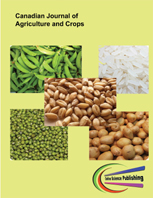Mixed Cropping Systems for Sustainable Domestic Food Supply of the Smallholder Farming Communities in Nakasongola District, Central Uganda
DOI:
https://doi.org/10.20448/803.3.1.42.54Keywords:
Crop mixture, Food crops, Extension services, Smallholder farmers.Abstract
Poverty alleviation and food security are the most important national priorities in Uganda. Development of agricultural technologies to improve rural livelihood through sustainable increase in production on crop, animal, and agroforestry products are the primary objective of the agricultural program in Uganda. This article presents the results of a study carried out to assess the sustainable use of multiple cropping patterns among farmers; and to determine possible combinations of socially valued fruit trees with annual crops. A survey was conducted between November 2017 and March 2018 in the parishes of Katuugo, Kyelindula and Kakooge of Kakooge Sub-county, Nakasongola district, central Uganda. A total of 220 farmers were interviewed using a structured questionnaire to elicit information on multiple cropping patterns and reasons for such mixtures. The results showed that farmers characteristics determined the multiple cropping patterns. Beans/maize/cassava cropping was the most prominent among farmers. Family income and sustainable domestic food security were the most prevailing reasons for multiple cropping. The study has provided information on the long-practiced method of multiple cropping by farmers, common food crop mixtures and their reasons for using multiple cropping patterns.


